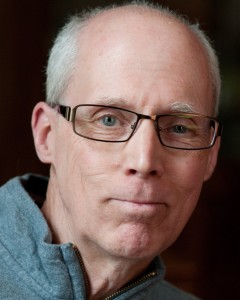At Great Schools for All, we know that socioeconomic diversity is the bedrock of any successful reform of high poverty segregated urban schools.
But I am always reminding myself that what we propose is not magic. For decade many urban school districts have played a huge part in the marginalization of racial and ethnic minorities, who are overwhelmingly poor.
And reversing the consequences of bad choices is going be difficult.

First, there are institutional dilemmas. Rather than follow the evidence—integration is the building block of academic success and higher level creative and critical thinking skills—policy makers in most states, including New York, chose instead to believe that throwing money and resources at segregated high-poverty schools would lead to educational equity.
Instead, the poorest schools are in worse shape than ever and the proponents of more resources blame teachers (and teacher unions), school boards, parents and even the students themselves for the crisis at hand.
It is extremely difficult now to persuade the policy makers who have poured vast sums of public money into failed educational ventures that it’s time to try something else.
But parents, too, face dilemmas when it comes to integration.
If you are not familiar with the work of New York Times Magazine staff writer Nikole Hannah-Jones, you should be. She is without question one of the most compelling and knowledgeable journalists writing about the struggle for educational integration.
In a magazine story headlined,”Choosing a School for My Daughter in a Segregated City,” Hannah-Jones explains that she and her husband and daughter live in Bedford-Stuyvesant, “a poor but rapidly gentrifying neighborhood in Brooklyn.”
The schools in Bed-Stuy, like most of the schools in one of the world’s most diverse cities, reflect deep “racial and socioeconomic divisions.” Most middle class families send their kids to private schools or to one of a handful of diverse, academically exceptional magnet schools. The poor are left behind in schools that reflect the academic and social consequences of marginalization.
Hannah-Jones grew up in Waterloo, Iowa, where, thanks to a court-ordered desegregation plan, she was able to attend a “rich white school.”
“I remember those years as emotionally and socially fraught, but also as academically stimulating and world-expanding,” she writes. “Aside from the rigorous classes and quality instruction I received, this was the first time I’d shared dinners in the homes of kids whose parents were doctors and lawyers and scientists. My mom was a probation officer, and my dad drove a bus, and most of my family members on both sides worked in factories or meatpacking plants or did other manual labor. I understood, even then, in a way both intuitive and defensive, that my school friends’ parents weren’t better than my neighborhood friends’ parents, who worked hard every day at hourly jobs. But this exposure helped me imagine possibilities, a course for myself that I had not considered before.”
After plainly explaining the benefits of integration, her thinking takes a turn:
“Integration was transformative for my husband and me. Yet the idea of placing our daughter in one of the small number of integrated schools troubled me. These schools are disproportionately white and serve the middle and upper middle classes, with a smattering of poor black and Latino students to create ‘diversity.’ ”
In New York, she says, just 15 percent of more than one million students are white, but they are clustered in just 11 percent of the schools, “which not coincidentally include many of the city’s top performers.”
She acknowledged that all the research says children like her daughter would be better off in one of the city’s integrated magnet schools, but she persuaded her husband (after many arguments) to send their daughter Najya to P.S. 307, one of Bed-Stuy’s poorer schools.
“One family, or even a few families, cannot transform a segregated school, but if none of us were willing to go into them, nothing would change. Putting our child into a segregated school would not integrate it racially, but we are middle-class and would, at least, help to integrate it economically. As a reporter, I’d witnessed how the presence of even a handful of middle-class families made it less likely that a school would be neglected. I also knew that we would be able to make up for Najya anything the school was lacking.”
Turns out that P.S. 307, led by a charismatic principal was a great fit for Najya, but within a couple of years, school officials redrew feeder boundaries to ease overcrowding in a largely white middle class school nearby—assuring that P.S. 307 would be more segregated than ever.
Hannah-Jones and her husband had done what they could to open P.S. 307 to a more integrated future, but the system seems likely to overwhelm their efforts—and those of a few other pioneering middle class families.
Integration is a heavy lift in a country where it is no longer national policy.
Parents have a duty to make the best choices they can. We can admire middle class parents who commit to poor urban schools and work doubly hard to make sure their children get the educational benefits they won’t get in those schools. And we can understand why middle class parents who have the means, relocate to a suburban district that promises great academic outcomes.
But Nikole Hannah-Jones’ very moving story is a powerful reminder that even the most thoughtful parents cannot always find a great school for their kids. The only way to make that a reality is through public policy that guarantees it.
